How to send a message triggered by a course event
You can process student data using various elements and inform students about updates on their learning progress through different communication channels, including email, SMS messages, web push notifications, and chatbots.
To prevent duplicates, make sure to review your email notifications before sending them to students. Learn more: Email notifications sent to students.
In this article, we'll show you how to add and configure each element and start an automation.
Create and configure an automation
Go to the A360 section and click Create new automation.
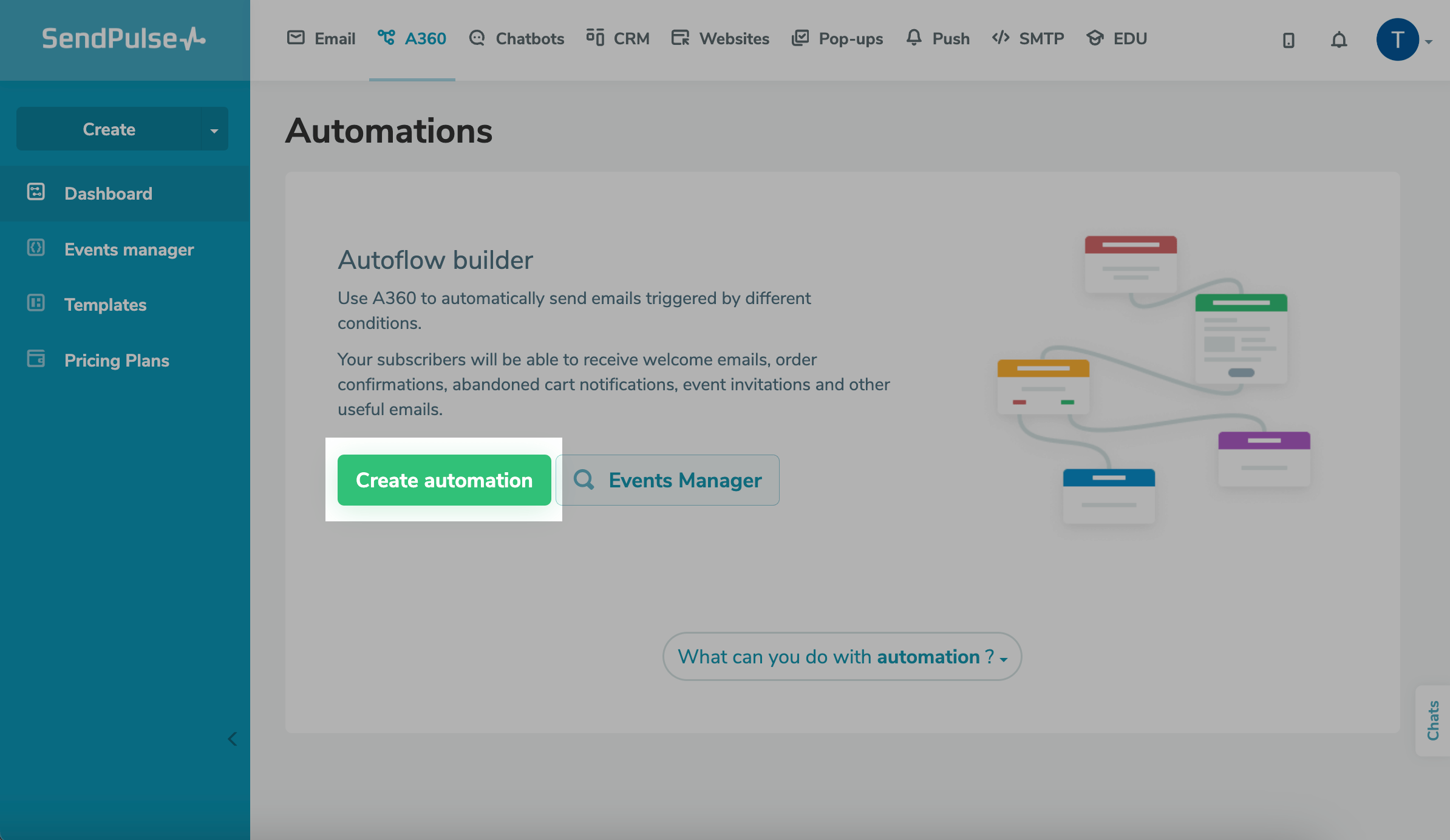
Enter your automation name, specify the sender, connect Google analytics, and select the unsubscribe page and unsubscribe form's language.

Set the series start
Choose the start condition to send a message at a specific stage of working with a student. You can choose from the following options for launching an automation:
| Add student | Launched after the student's registration is confirmed for the selected course. |
| Receive student’s payment | Launched after the successful payment of the selected course. |
| Grant course certificate | Launched after the certificate is received. |
| Complete course | Launched after the course completion conditions are met. |
| Add new lesson to course | Launched after a new lesson is added to the course. |
| Limit course access time | Launched when the course access time is limited. |
Read more: Automation Launch Triggers: Courses Trigger.
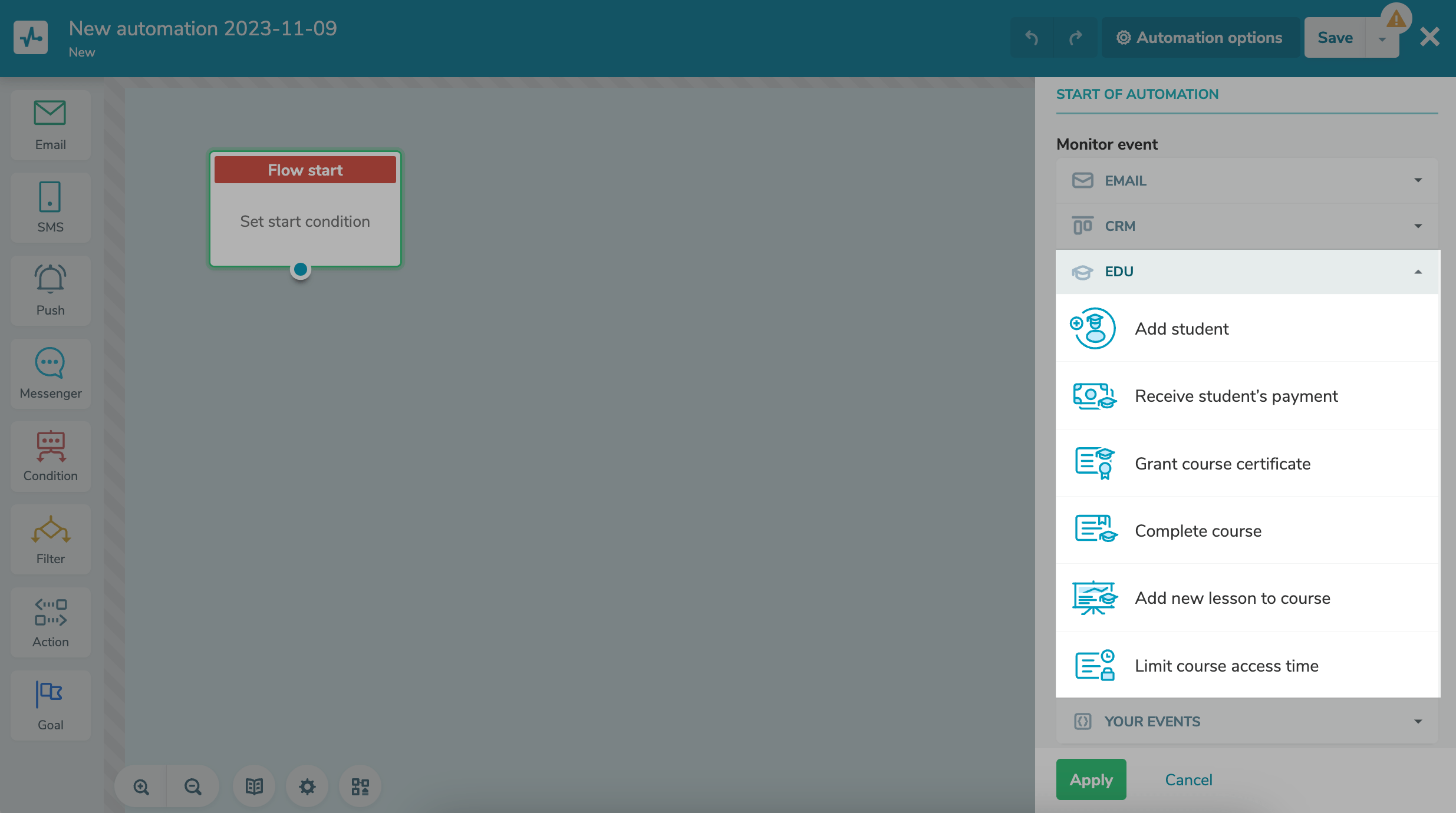
Add an element to send a message
In Automation360, you can send a message to the user via Email, SMS, Viber, Push, and Messenger elements.
Your flow will be sent to your primary contact one time. If you have saved more than one phone number and email address in a contact card, the system will send your flow to your selected primary contacts. By default, the email address and phone number you added first are recognized as your primary contact.
You can also use the {{email}} and {{phone}} variables within the same flow element, for example, to add an email address to your SMS message text.
Drag the Email element into the editor field, and specify the start message’s sending time.
Please note that the student contact that goes through the flow must have an email address. Contacts with only a phone number will not receive your email.
Read more about block execution conditions in the article: Element execution time.
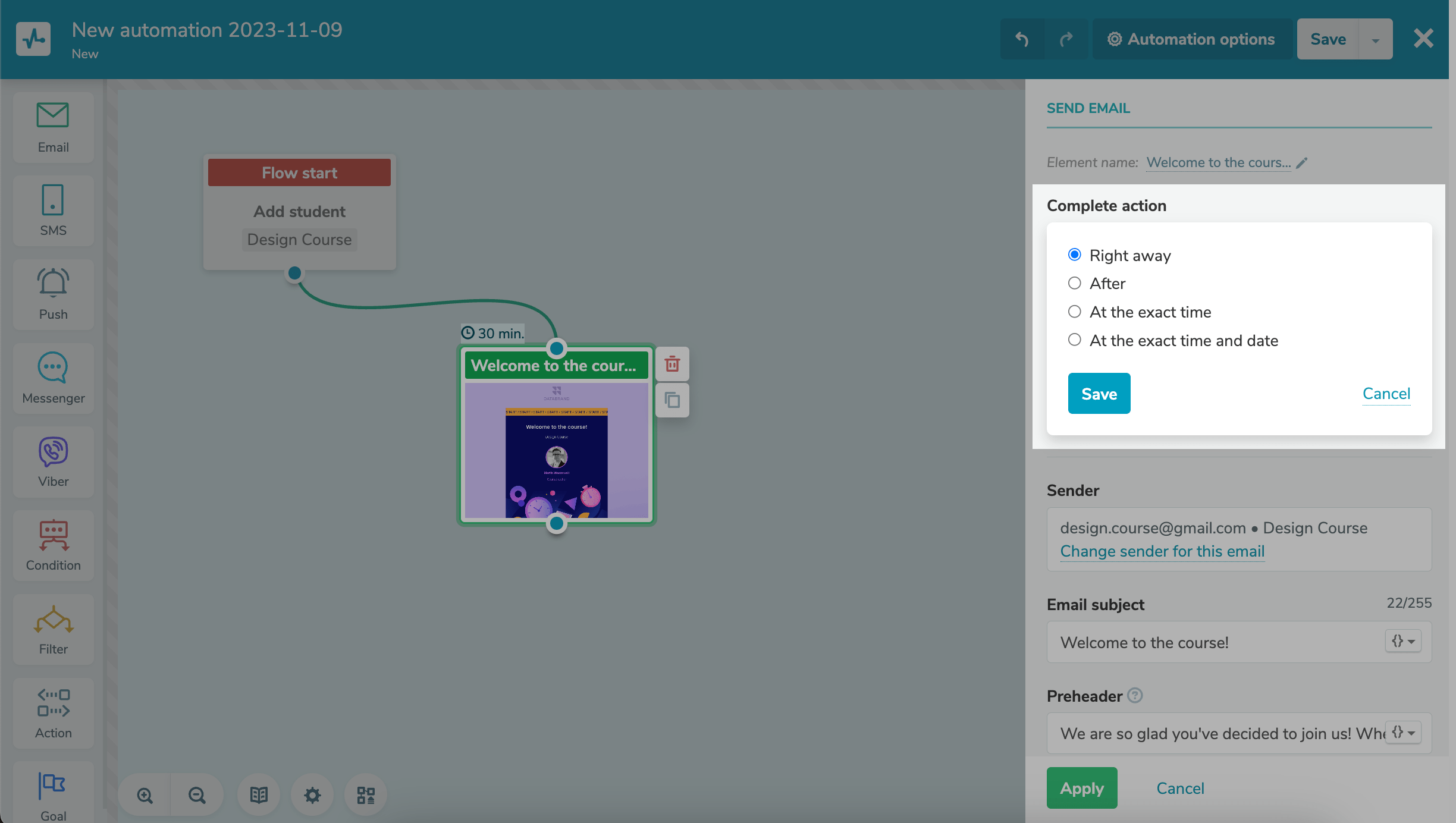
Enter your email subject and preheader. You can personalize the subject and preheader by adding variables.
Select a template. Additionally, you can attach files to your email.
Learn more: How to create your own template and How to create dynamic emails triggered by events using pre-made SendPulse templates.
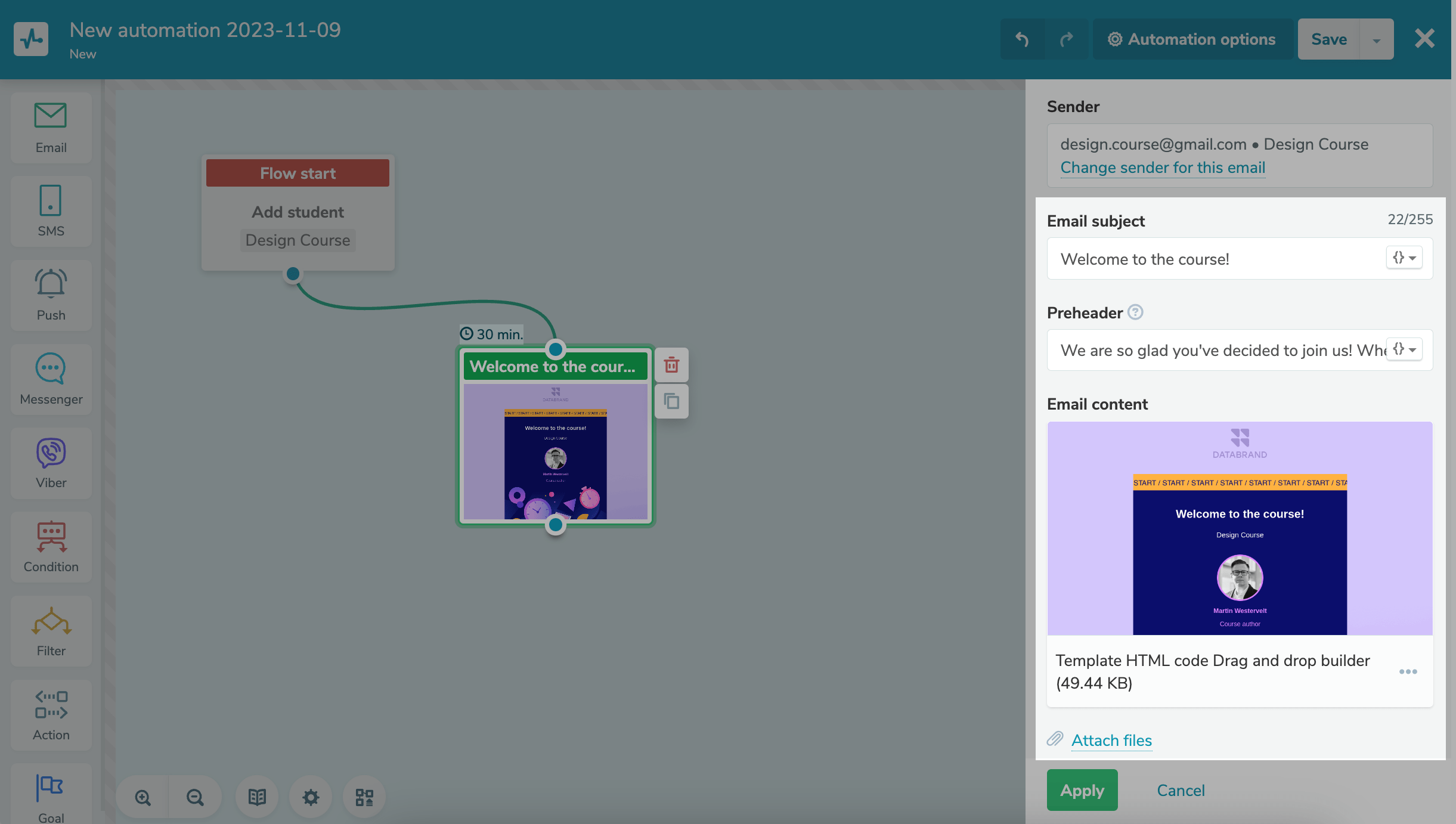
You can also turn off the unsubscribe link if you are sending a transactional email.
You can disable the unsubscribe link for only three Email elements.
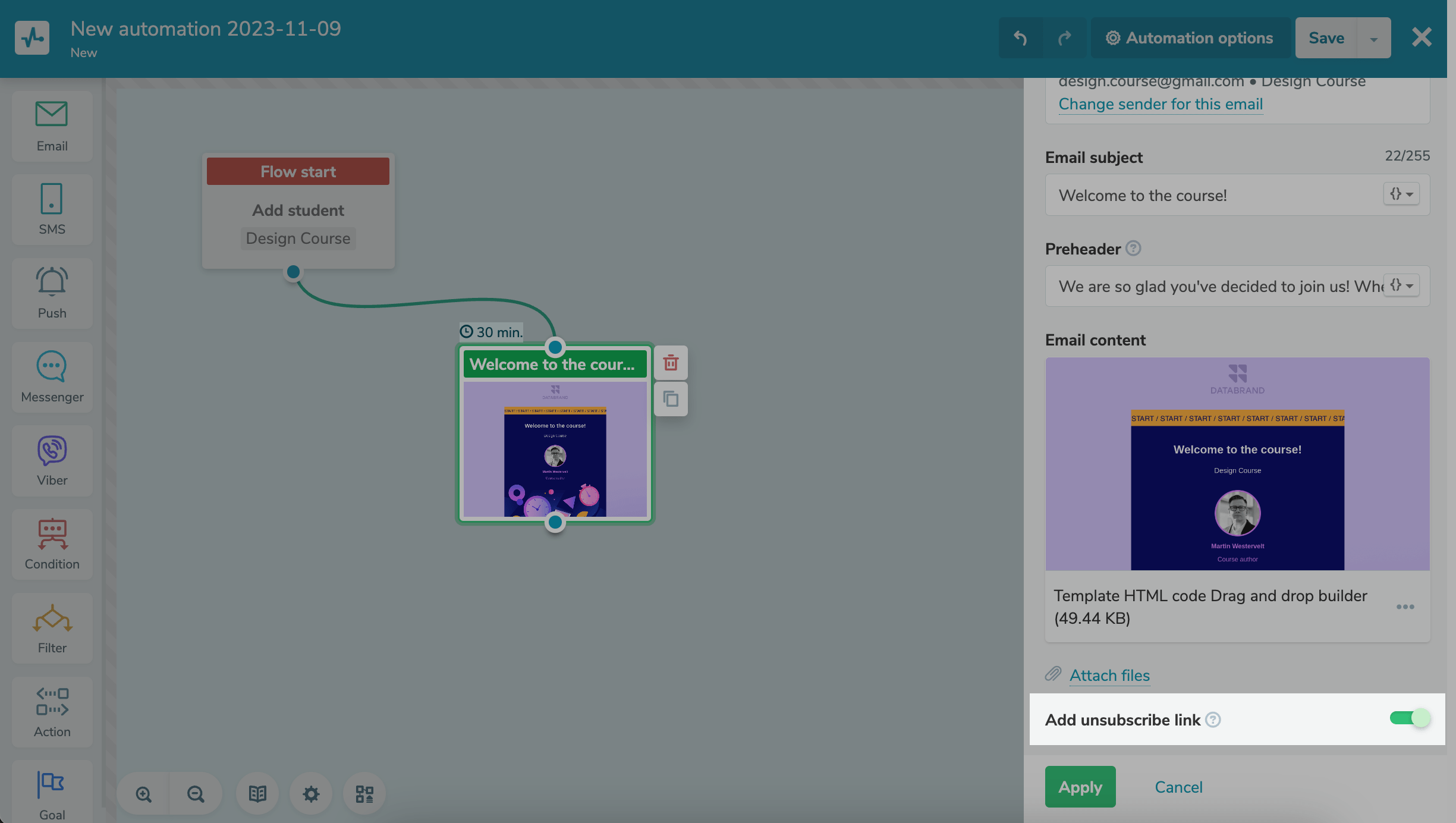
Click Apply.
SMS
Drag the SMS element into the editor field, and specify the start message’s sending time.
Please note that the student contact that goes through the flow must have a phone number. Contacts with only an email address will not receive your message.
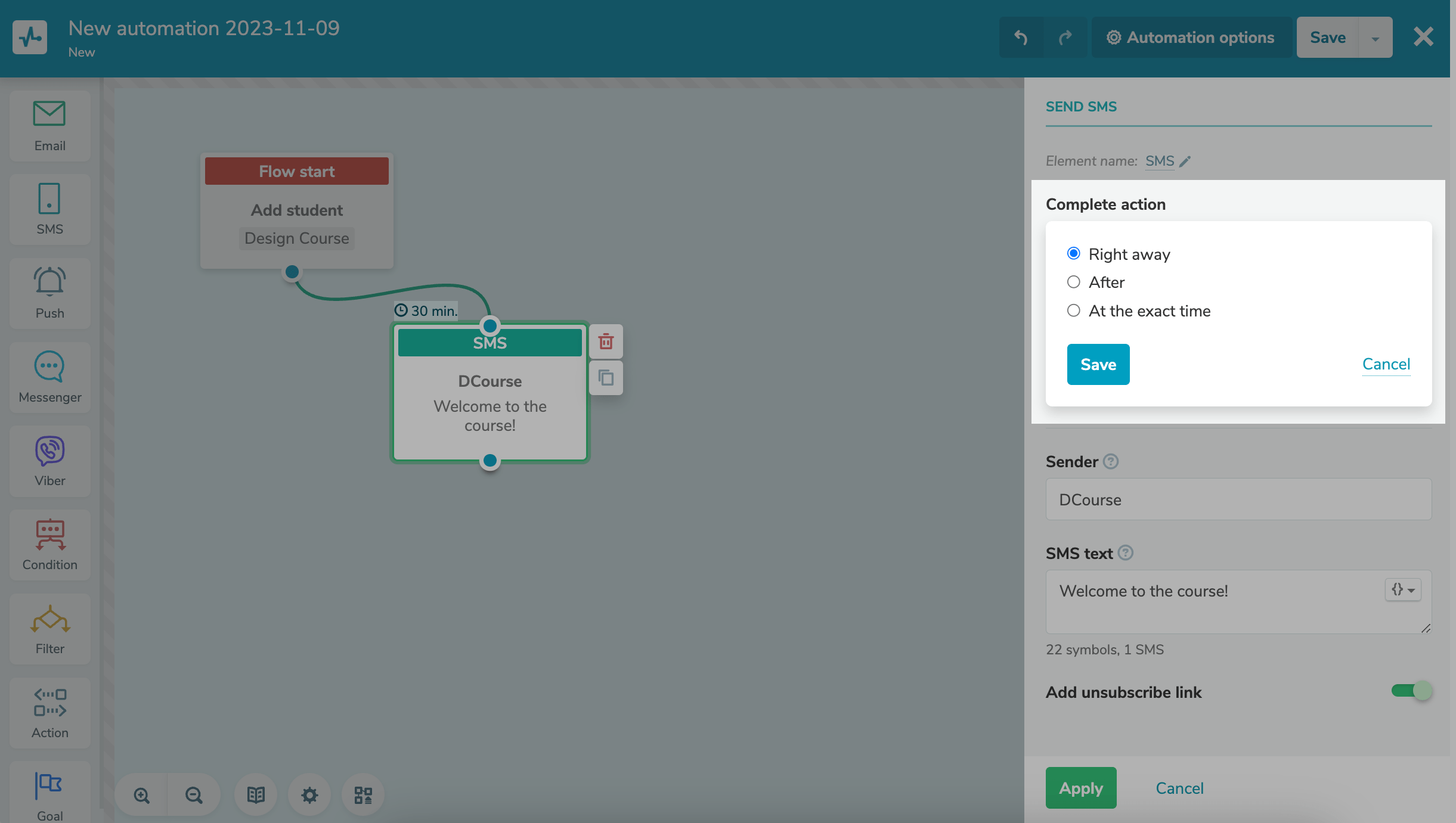
Enter the SMS sender's name and SMS text. You can personalize the message text and insert variables.
You can enter up to 11 Latin characters in combination with numbers as your SMS sender name, including spaces. Entering numbers without letters is not allowed.
Additionally, you can add the unsubscribe link, which will add from 23 to 25 characters to the overall length of your message text.
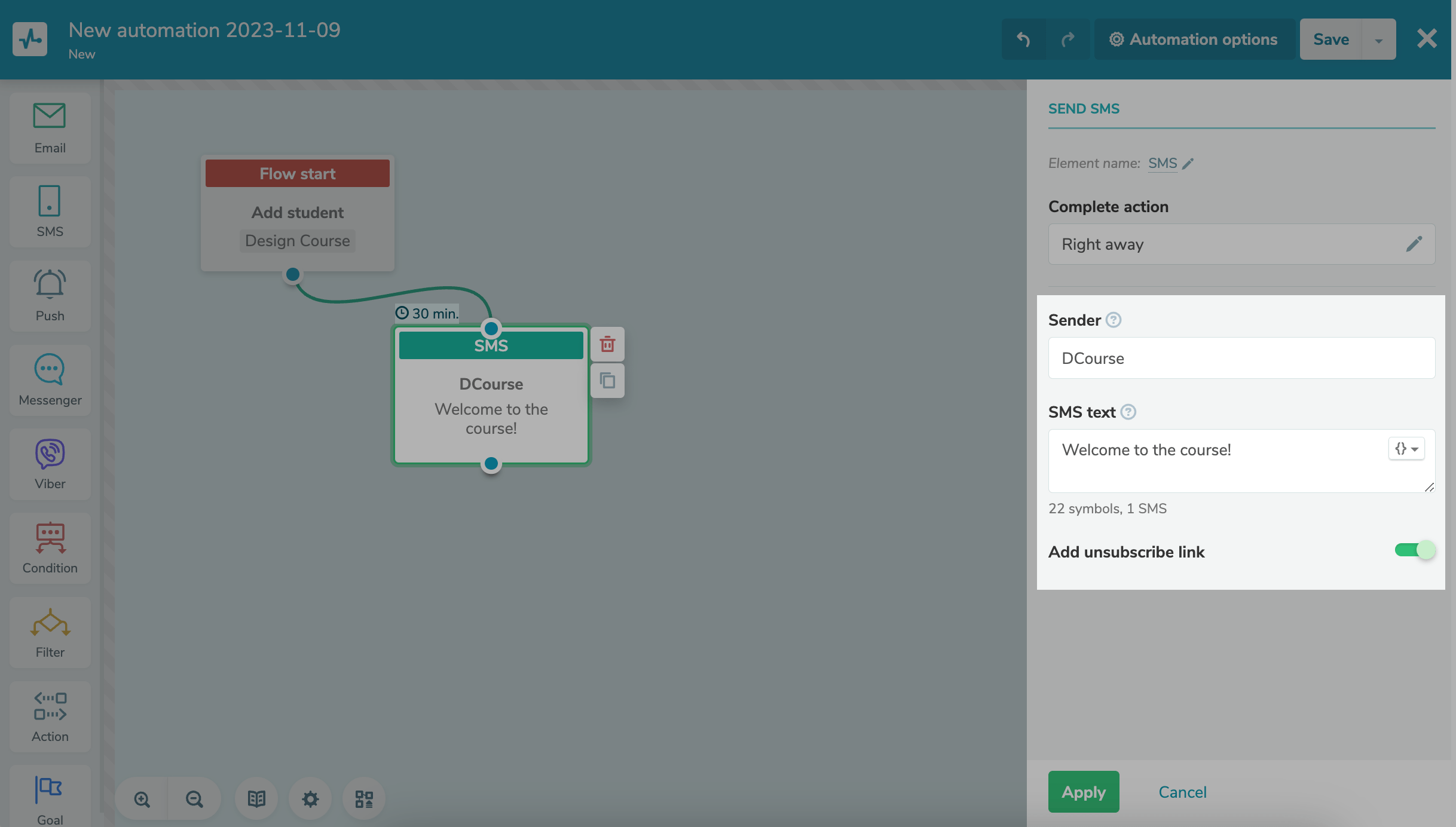
Click Apply.
Viber
Drag the Viber element into the editor field, and specify the start message’s sending time.
Please note that the student contact that goes through the flow must have a phone number. Contacts with only an email address will not receive your message.
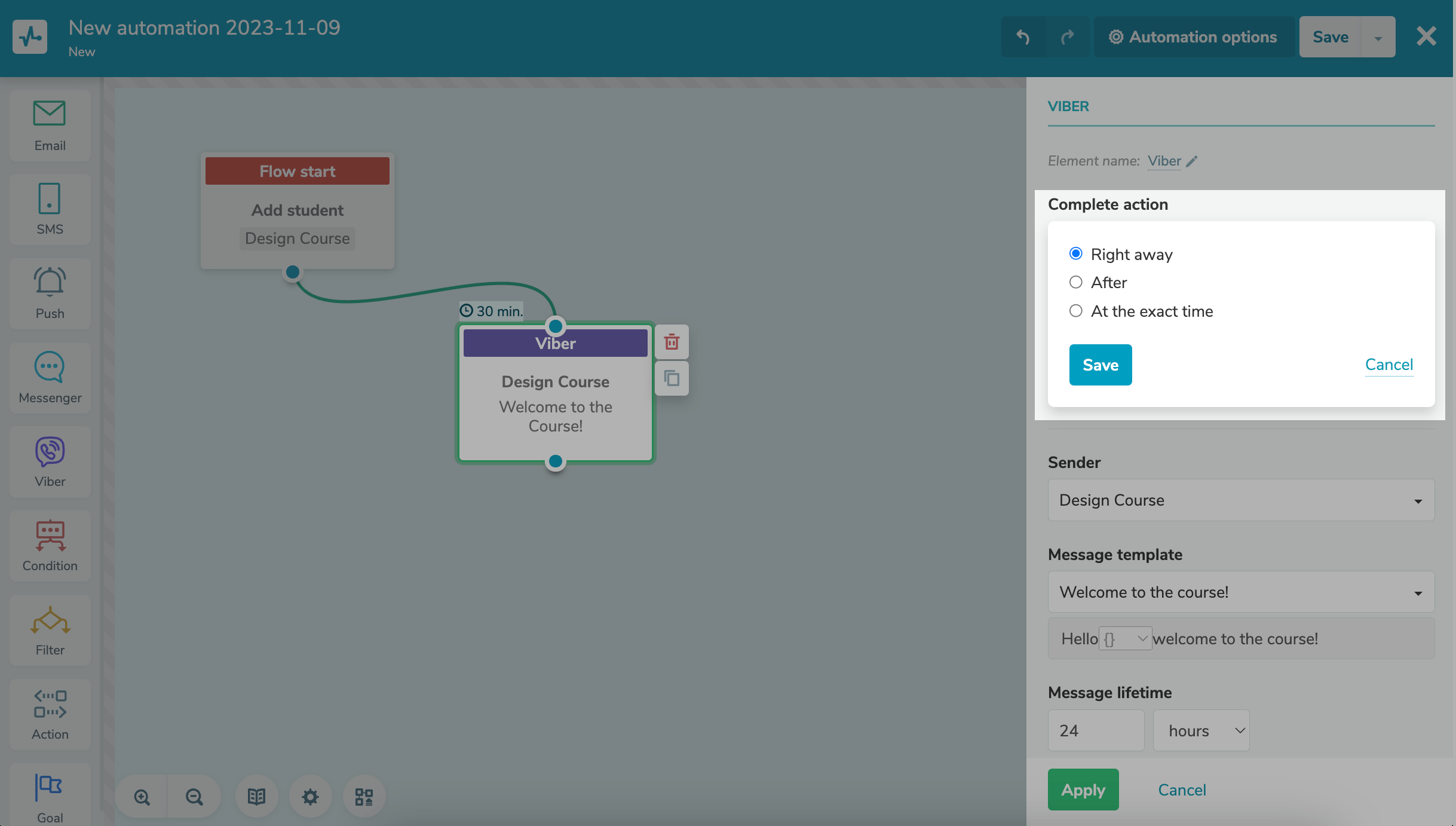
Select your sender and message template. Add your variables from the list, and set the message lifetime.
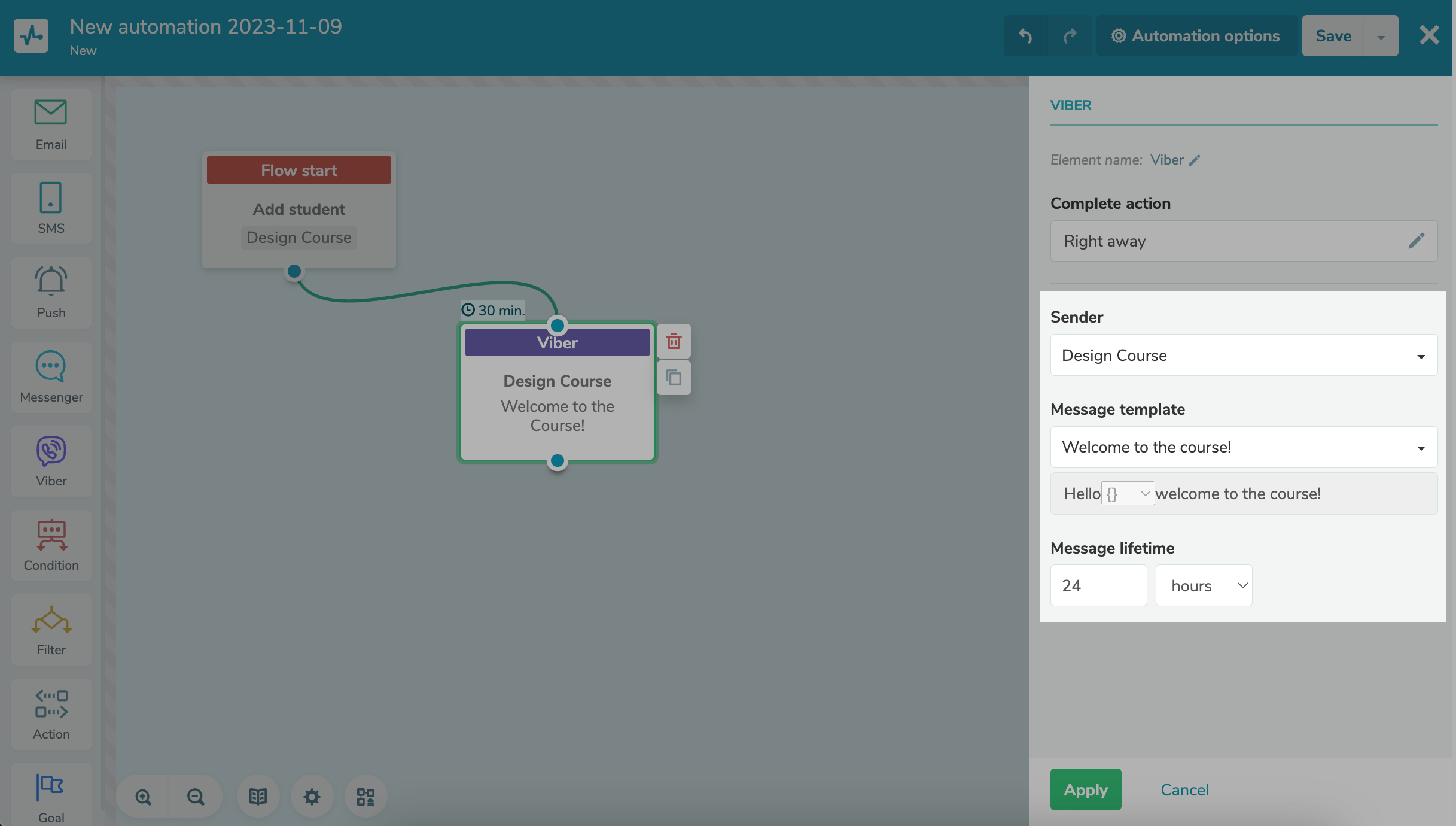
Click Apply.
Push
Drag the Push element to the editor, and select the recipients of your push message.
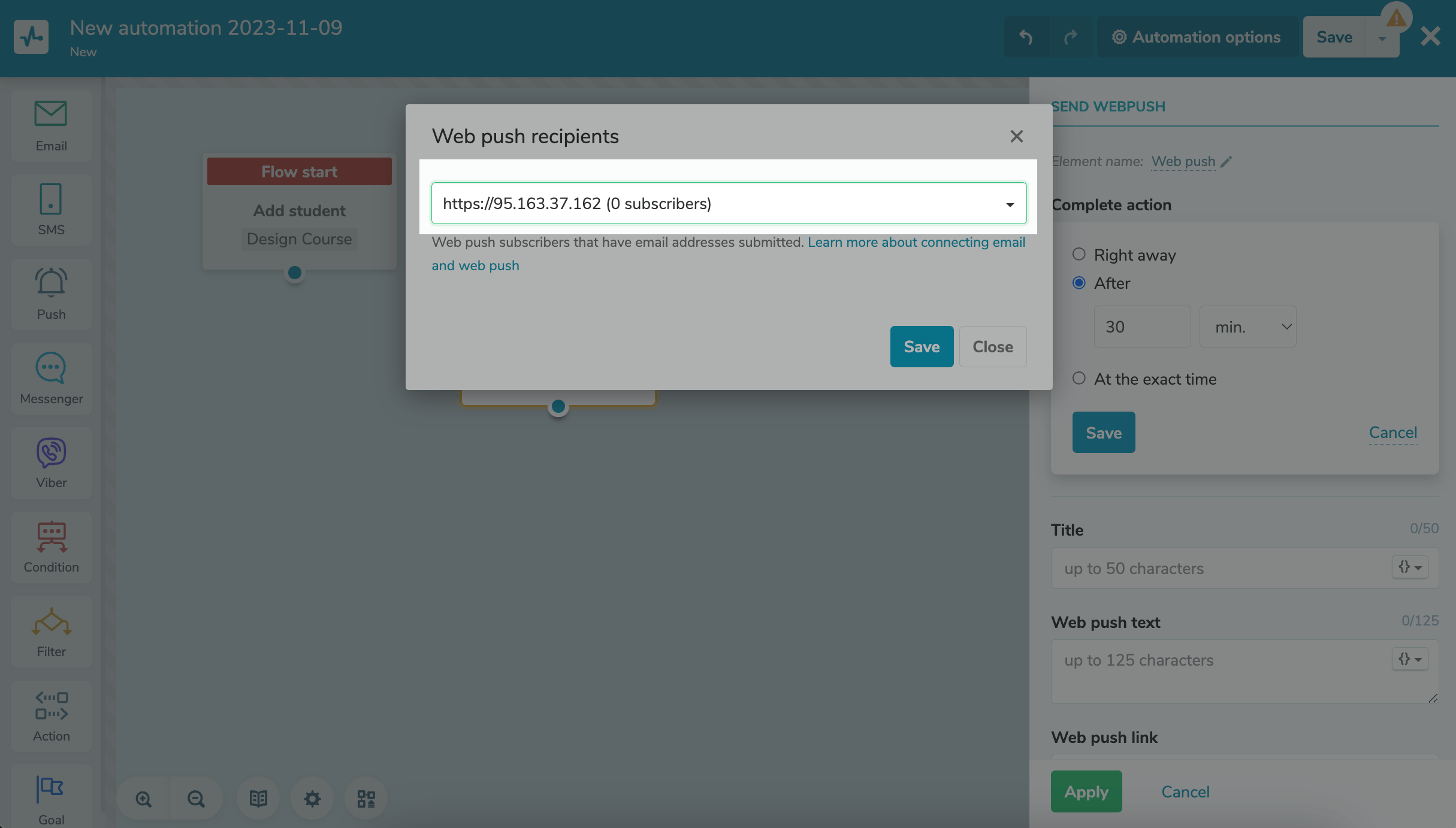
Enter the start notification’s sending time. Enter your title, text, and a web push link for the notification. Specify the web push lifetime.
Additionally, you can replace the standard push notification image.
Please note that to send push notifications, the subscriber of the selected site must have the same email address as the student contact that goes through the flow.
Read more: How to Send Web Push Notifications in Automations.
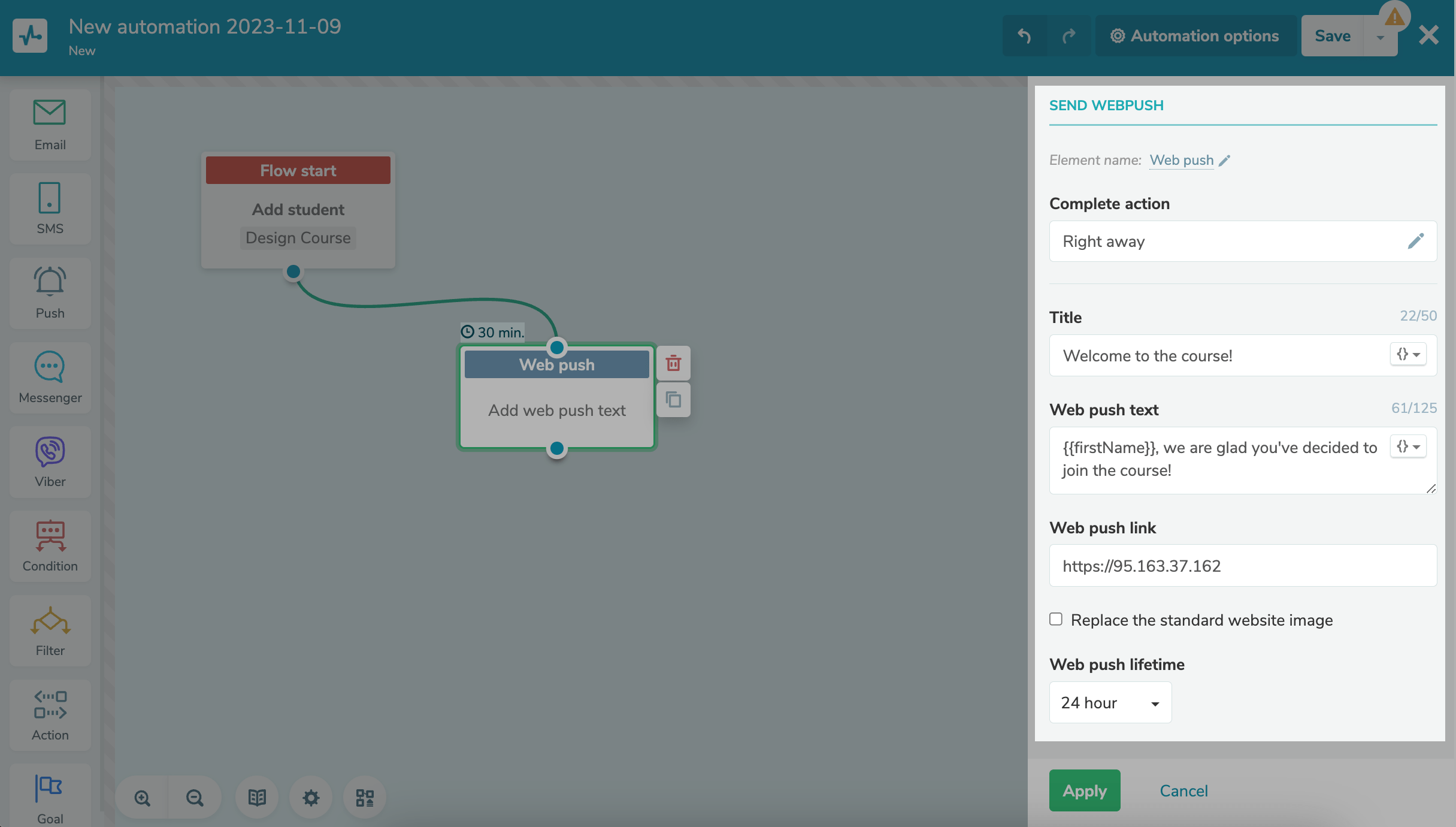
Click Apply.
Messenger
Drag the Messenger element into the editor field, and specify the start message’s sending time.
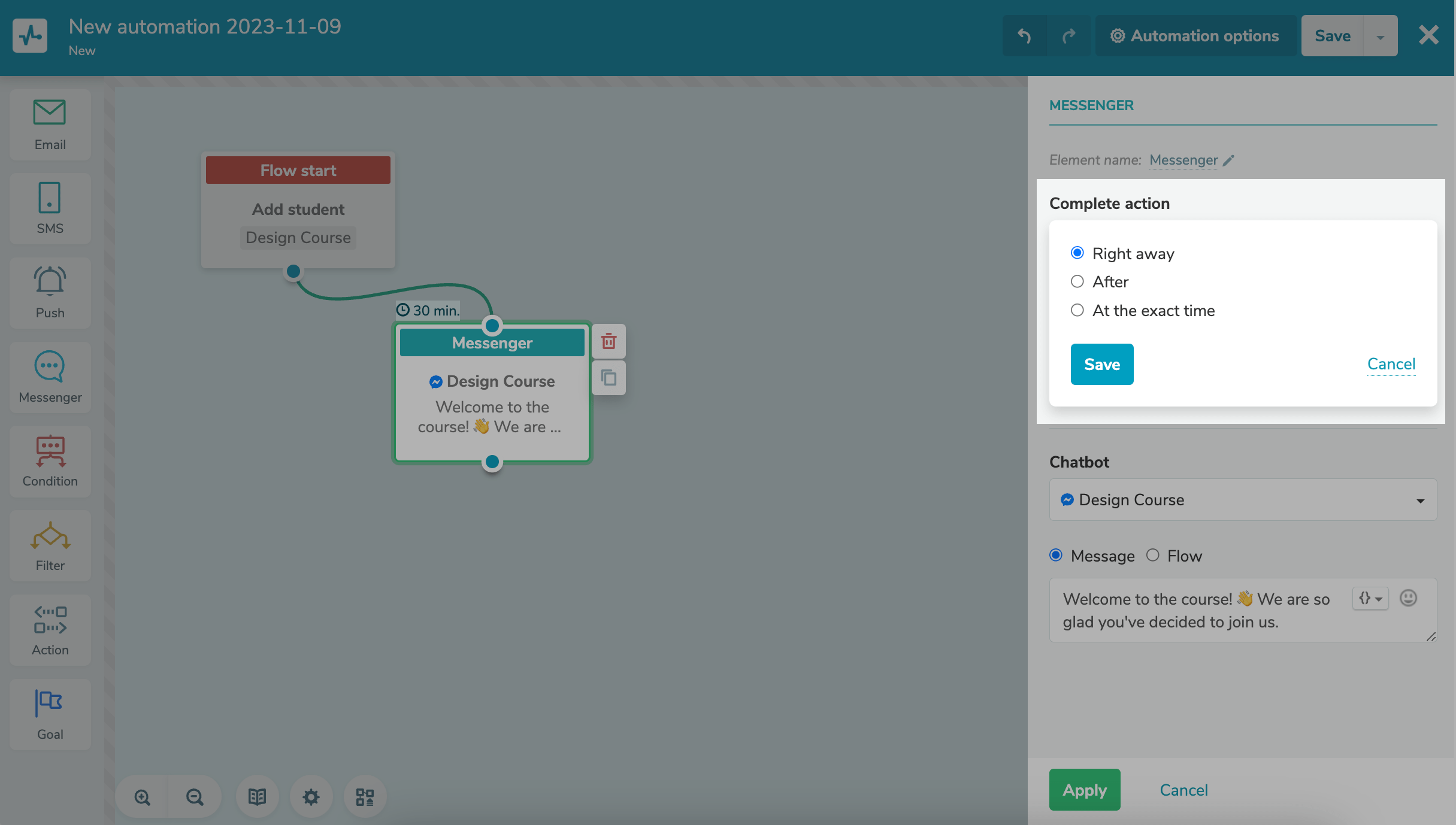
Select the chatbot with the help of which you want to send a message to subscribers.
Note: the recipient must be subscribed to the chatbot using which you will send the message and have an email or phone number included in your chatbot's Audience. Read more about how to get additional variables: Messenger in Automation 360 and How to manage subscribers and their data in your chatbot audience.
Choose an action: send a message or start a flow.
In the Message section, enter the text of your message. You can also add variables and emoji to the text.
In the Flow section, select a flow.
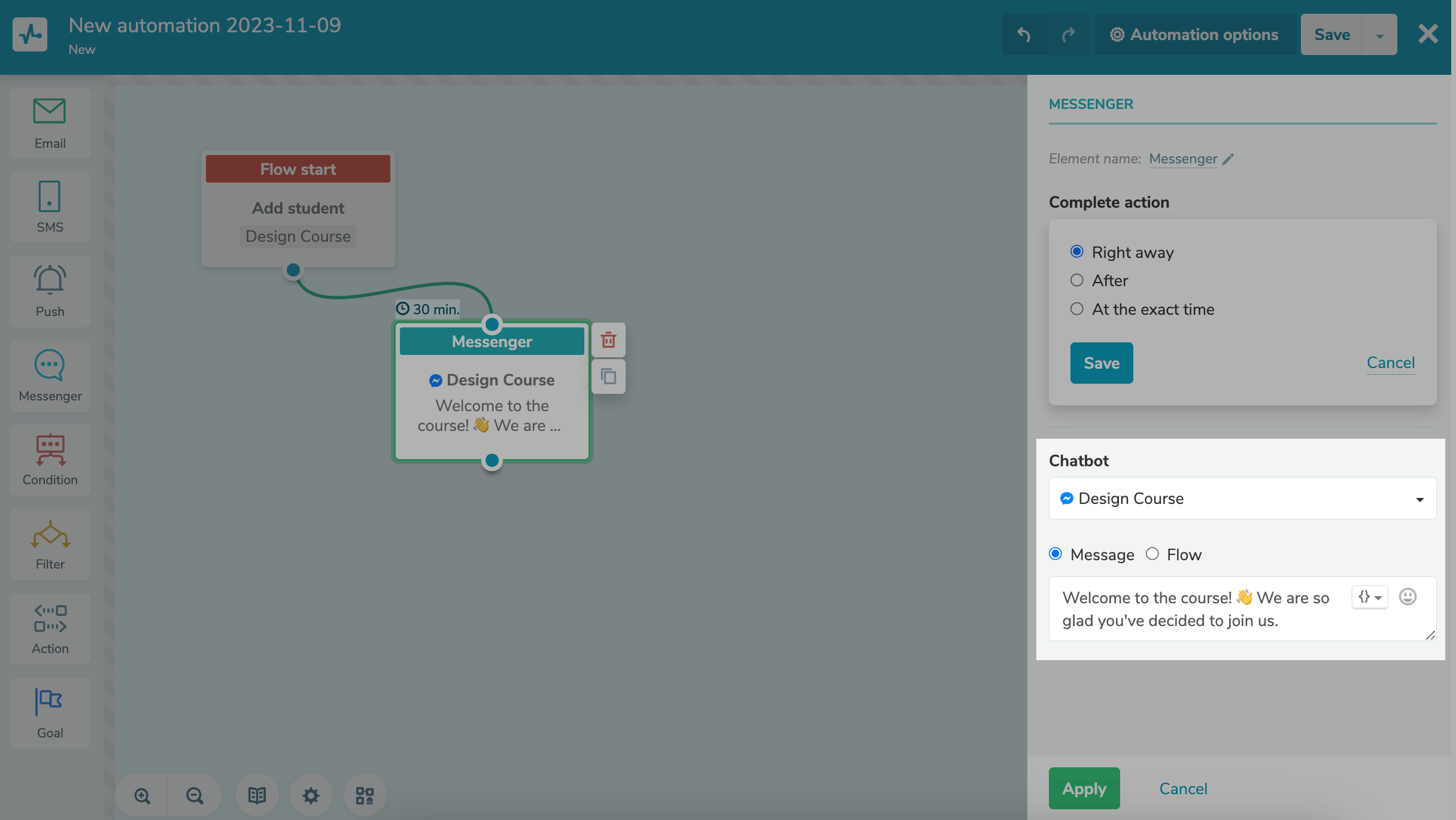
Click Apply.
Add additional elements
Additionally, you can add other elements and diversify the functionality of the flow. For example, you can add a Condition element to track your email opens and deliverability, a Filter element to branch the flow, depending on the variable value, or the Action element to update contact data or status in the bulk email service, student system, and online course builder.
When the Action element is selected, the following data management options are available in Courses:
| Enroll to another course | Registers a student for the selected course. |
| Invite to another course) | Sends a student an invitation to the selected course. |
| Assign tag | Adds a contact tag in CRM and a student in Courses. |
| Delete from course | Deletes a student from the selected course. |
| Block in course | Blocks a student in the selected course. |
| Mark as paid | Changes the course payment status to "Paid" in the "Students" section. |
| Change access time limits | Changes the course access period. |
When the Condition element is selected, the following data management options are available in Courses:
| Add student | Checks if a student has been added to the selected course. |
| Receive student's payment | Checks the course payment status. |
| Grand course certificate | Checks if a student has received a certificate after completing the course successfully. |
| Complete course | Checks if a student has completed the selected course. |
Save and launch
Once you've finished setting up your flow, save and launch it.
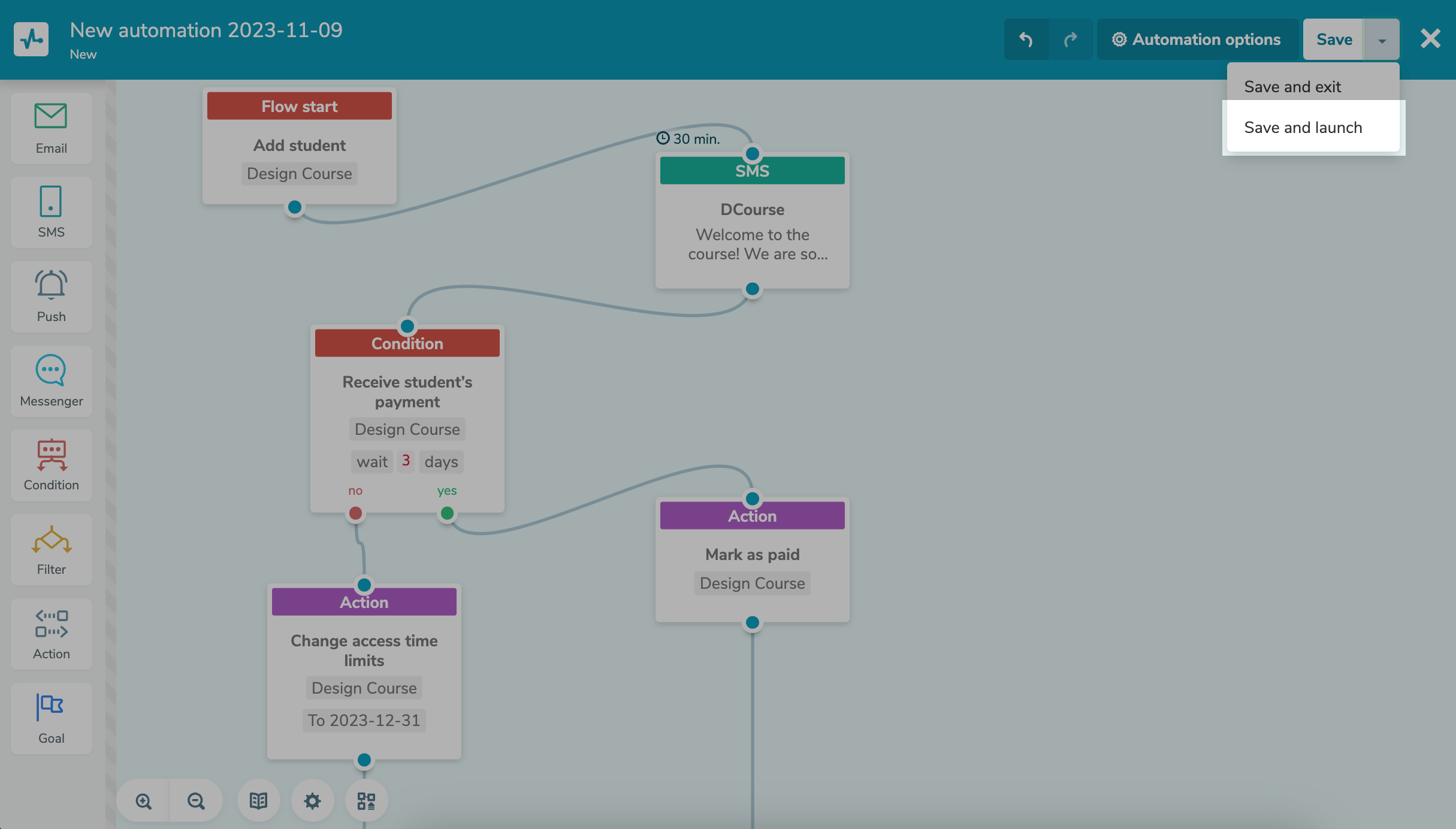
The user will receive your message as soon the conditions of the series start are met.
Last Updated: 13.03.2024
or